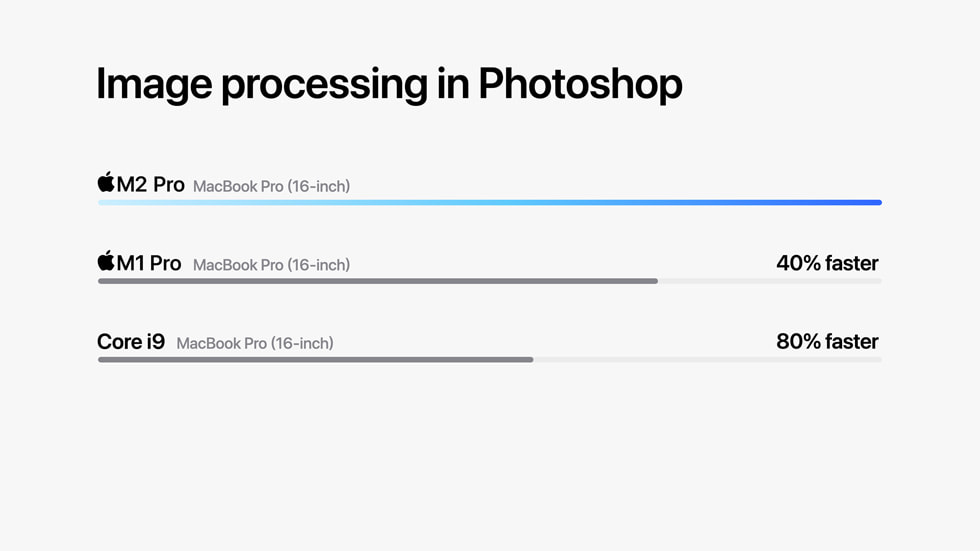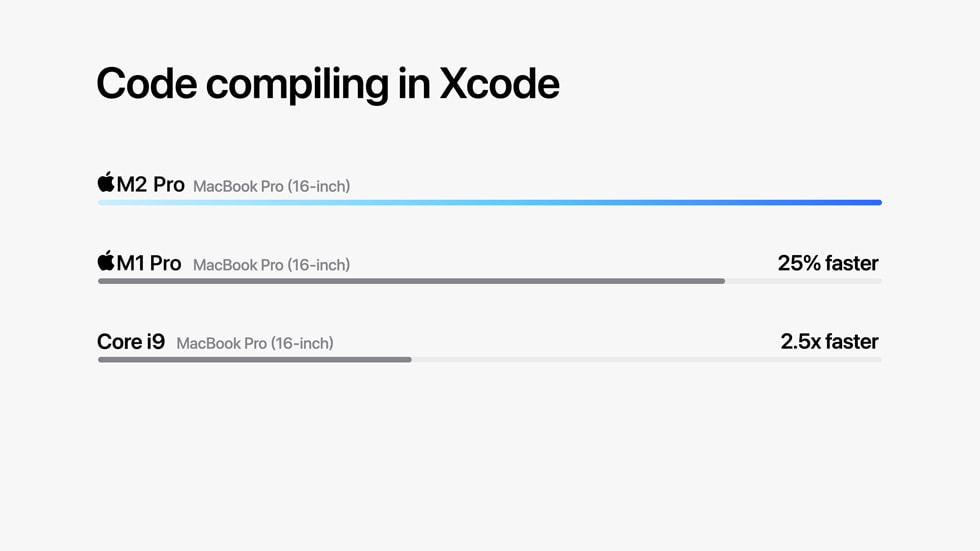
Apple has announced the long-waited M2-powered MacBook Pro in a not-so-surprising announcement post, as Apple leaker Jon Prosser told the world to keep an eye out on the Apple newsroom website hours ahead of the reveal.
The new M2 Pro and M2 Max are available with Apple’s new 2023 Mac Mini and 2023 14-inch and 16-inch MacBook Pro. Pre-orders for the machines are live on Apple’s website, with estimated delivery scheduled for January 24th.
On the other hand, Apple’s M1 Pro and M1 Max MacBook Pro are no longer available on Apple’s website but can still be purchased at other retailers.
If you’re in the market for a new MacBook Pro and need help deciding if the new M2 Pro and M2 Max chips are suited for your needs, you can find out some of the key differences between the two chipsets below:
Apple’s M-series chips are designed with the 5nm (nanometer) process, allowing the company to squeeze in extra transistors per chip. More transistors equal faster processor performance. For reference, the new M2 Max chip has 67 billion transistors, while the M1 Max could fit in 57 billion transistors.
Similarly, the 2021-released M1 Pro and M1 Max chips featured a 10-core CPU and a maximum of 32-core GPU. The new M2 Pro and M2 Max take this further with a 12-core CPU and up to a 38-core GPU for heavy tasks like rendering 8K videos, processing images in Photoshop or compiling code in Xcode. Apple says that the upgrade in GPU cores also enables “console-quality gaming” on the new laptops, with the M2 Max chip receiving a buff of up to 30 percent in graphics performance, while the upgraded CPU on the M2 Pro is up 20 percent faster than the CPU in M1 Pro chips.
“Only Apple is building SoCs like M2 Pro and M2 Max. They deliver incredible pro performance along with industry-leading power efficiency,” said Johny Srouji, Apple’s senior vice president of hardware technologies, in a recent press release. “With an even more powerful CPU and GPU, support for a larger unified memory system, and an advanced media engine, M2 Pro and M2 Max represent astonishing advancements in Apple silicon.”
The Neural Engine on the M1 Pro/M1 Max and M2 Pro/M2 Max is the same 16-core, though according to Apple, the new chips are “40 percent faster” at machine learning tasks and are capable of 15.8 trillion operations per second. “Apps like Adobe Photoshop run heavy workloads faster than ever, and compiling in Xcode is up to 2.5x faster than on the fastest Intel-based MacBook Pro,” says Apple.
Further, the new MacBooks with the M2 Pro and M2 Max chips feature a maximum of 96GB unified memory, while the 2021 M1 Pro and M1 Max MacBooks featured significantly less 64GB max unified memory.
Other than the chips, the 2021 and 2023 MacBook Pros are almost identical, at least visually. They feature the same storage variants, the same mini-LED backlit Liquid Retina XDR display with 1,000 nits of sustained and 1,600 nits of peak brightness and True Tone technology.
Both 2021 and 2023 MacBook Pro variants are dimensionally the same, though the new M2 Pro and M2 Max machines weigh slightly more than their predecessors.
One facet where the new machines have received a significant update over their predecessors, other than the chip, is support for Wi-Fi 6E. Support for Wi-Fi 6E extends Wi-Fi to the 6GHz band for increased bandwidth, faster speeds, and lower latency, in contrast to the 2021 MacBook Pros, which support the standard Wi-Fi 6, which is limited to the 2.4GHz and 5GHz bands.
The battery has also received a slight bump, with the 16-inch M2 Max MacBook Pro offering 15 hours of wireless web surfing and up to 22 hours of Apple TV app movie playback, compared to the 16-inch M1 Max MacBook Pro, which offers up to 14 hours wireless web and up to 21 hours Apple TV app movie playback.
The new MacBooks now also support HDMI 2.1, in contrast to the 2021 MacBook Pro, which featured an HDMI 2.0 port. The updated port features support for 8K displays at up to 60Hz and for 4K monitors at up to 240Hz, while the 2021 MacBook Pro could only support up to two external displays with up to 6K resolution at 60Hz (Apple M1 Pro) or up to three external displays with up to 6K resolution and one external display with up to 4K resolution at 60Hz (Apple M1 Max) via HDMI 2.0.
Both the 2021-released M1 Pro/Max machines and the new M2 Pro/Max machines are capable of handling memory and power-intensive tasks, multitasking and running heavy workloads, though the upgrade in transistor count, paired with an increase in both CPU and GPU cores make the M2 Pro and M2 Max undoubtedly more power efficient and faster than their predecessors.
Check out the Canadian pricing and availability for the new MacBooks here.
Image credit: Apple
Source: Apple
MobileSyrup may earn a commission from purchases made via our links, which helps fund the journalism we provide free on our website. These links do not influence our editorial content. Support us here.






